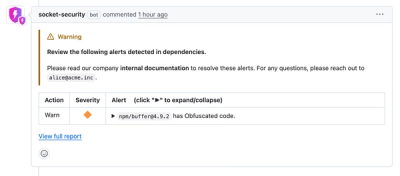
Security News
Crates.io Users Targeted by Phishing Emails
The Rust Security Response WG is warning of phishing emails from rustfoundation.dev targeting crates.io users.
Generate Google Service Account tokens with your YubiKey!
This is perhaps the most secure way to use Google Service Account (SA) credentials outside of Google Cloud, since the private key never leaves the device, and so it cannot be leaked or stolen without physically stealing the YubiKey.
Additionally, each operation is protected with a YubiKey PIN, providing a 2nd factor of authentication as something a user knows (in addition to something a user has, which is the YubiKey itself).
In this way, a single YubiKey can represent the identity of a user across many SAs, without the need to send the private key material over the wire at any point.
This makes it even more secure than SA impersonation, where a user's long-term refresh token has been traditionally stored on their machine, and could thus be compromised.
Python 3.7+
YubiKey 4+, FIPS and NEO
The key must have PIV feature to be eligible. For the specific list of compatible models, please see here and here.
Please note that the private key is stored on one of the available
PIV certificate slots,
which does NOT interfere with other functionality,
like web 2FA authentication or OpenPGP.
You can choose the slot freely (by default, it's 9a).
pip3 install google-yubikey
Set up YubiKey PIN, as explained here.
Run this only once to set up a private key on the YubiKey, or to renew it after expiration:
google-yubikey generate-key > yubikey.pem
The output yubikey.pem key above is public - to be used in the next step.
Install Google Cloud SDK and run:
gcloud auth login
gcloud beta iam service-accounts keys upload yubikey.pem \
--iam-account <service_account_email>
gcloud auth revoke # optional, but recommended
This is needed only for setting up YubiKey with a SA.
Your user account must have at least Service Account Key Admin role
or iam.serviceAccountKeys.create permission
on the target SA(s).
As a good practice, the last command revokes your Google Cloud SDK credentials, which limits the potential for their exposure only to the time of the public key upload.
Alernatively to step 3, you can upload yubikey.pem from step 2 via
Google Cloud Console for the target SA(s):

Run this every time you'd like to generate a SA token:
google-yubikey token -a <service_account_email>
By default, this command will generate a Google OAuth 2.0 access token.
You can also generate an ID token using -t id.
The command prints the token to standard output, so it can be easily assigned to a variable for integration into your scripts.
To use YubiKey for Google Cloud SDK or your existing applications, you can start a local metadata server that emulates Google Compute Engine (GCE) environment for token generation:
sudo google-yubikey serve -a <service_account_email> -n <numeric_project_id>
Unfortunately, this command needs to be run with elevated privileges, since it opens privileged port 80 on a link-local alias IP, to emulate GCE. However, according to security best practices, it drops privileges for the server workers.
Once the server is running, you can use regular commands as if you were running them on a GCE instance (!), for example:
gcloud config set account <service_account_email>
gcloud auth list
gsutil ls
docker run --rm -it google/cloud-sdk:alpine bq ls
node app.js # a JavaScript app that uses Google client libraries
When these commands request a token from the metadata server (behind the scenes), it will ask you for the YubiKey PIN, and cache it and the token for a short time to improve user experience.
As you can see, there's no need to download SA keys
and set GOOGLE_APPLICATION_CREDENTIALS anymore!
Further customization options are available through:
google-yubikey [<command>] -h
This tool is still early on in the development. It works, but may have unusual edge cases that make it fail for your setup. Please use with caution, and raise an issue if you come across one.
FAQs
Generate Google Service Account tokens with your YubiKey
We found that google-yubikey demonstrated a healthy version release cadence and project activity because the last version was released less than a year ago. It has 1 open source maintainer collaborating on the project.
Did you know?

Socket for GitHub automatically highlights issues in each pull request and monitors the health of all your open source dependencies. Discover the contents of your packages and block harmful activity before you install or update your dependencies.

Security News
The Rust Security Response WG is warning of phishing emails from rustfoundation.dev targeting crates.io users.

Product
Socket now lets you customize pull request alert headers, helping security teams share clear guidance right in PRs to speed reviews and reduce back-and-forth.

Product
Socket's Rust support is moving to Beta: all users can scan Cargo projects and generate SBOMs, including Cargo.toml-only crates, with Rust-aware supply chain checks.